Abstract
Studies were made ascertaining the effects of temperature and length of incubation period on the amount of precipitate formed in the BSA-antiBSA fowl serum system. The specific factors considered were centrifugal temperature, temperature of incubation and length of incubation. Reactions were analysed for the entire precipitin curve, using doubling dilutions of antigen, and also for the region of equivalence using intervals of 1 μg. nitrogen.
Reactions mixtures were incubated at 37° for 3 hours and then centrifuged at 22° or at 4° and the precipitate was analysed for total N precipitated. In addition, secondary incubation periods, following this initial incubation treatment of 3 hours at 37°, were made. The secondary periods were either 18, 66 or 118 hours at 4° or 18 hours at 37° and were followed by centrifugation at either 22° or 4°.
Evaluation of the data showed centrifugation at 22° gave higher amounts of precipitate than at 4° in all cases and the differences were statistically significant in most of the instances. In eighteen of the twenty sera tested, precipitation was at a maximum after 3 hours' incubation at 37° and warm centrifugation in contrast to additional incubation periods and/or cold centrifugation.
Full text
PDF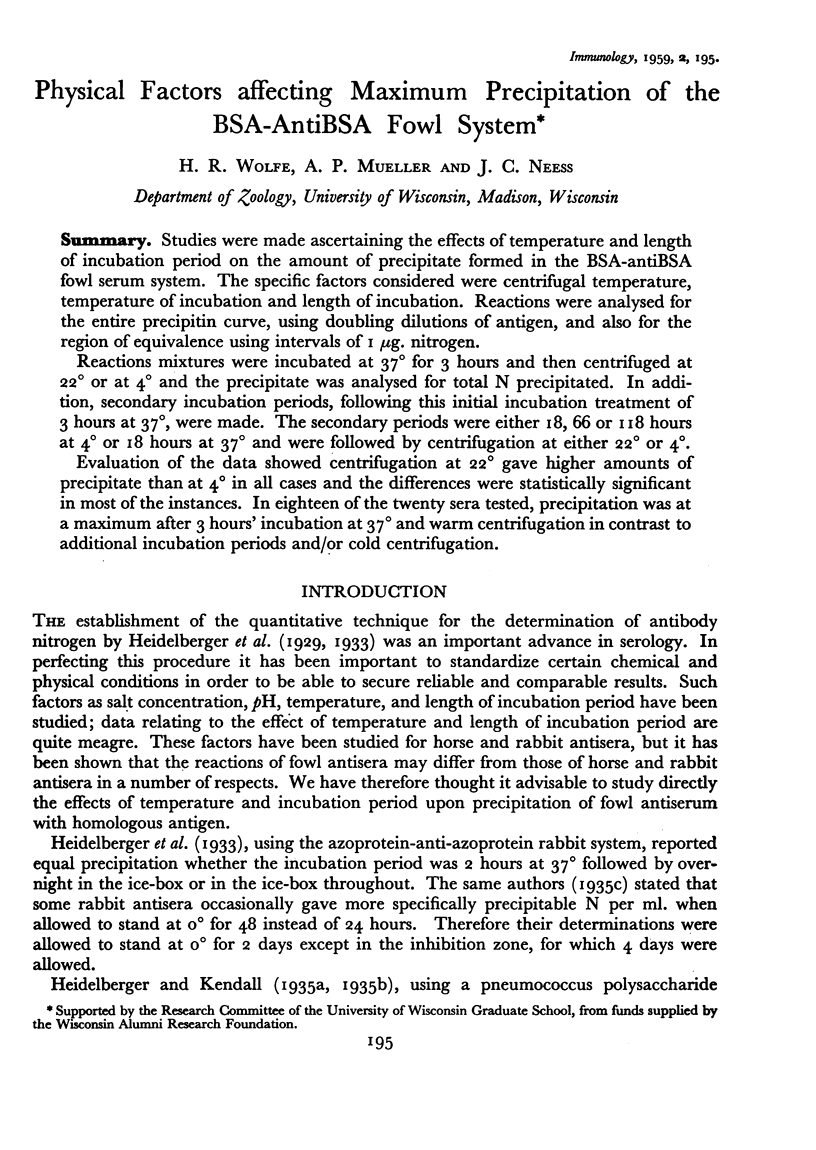
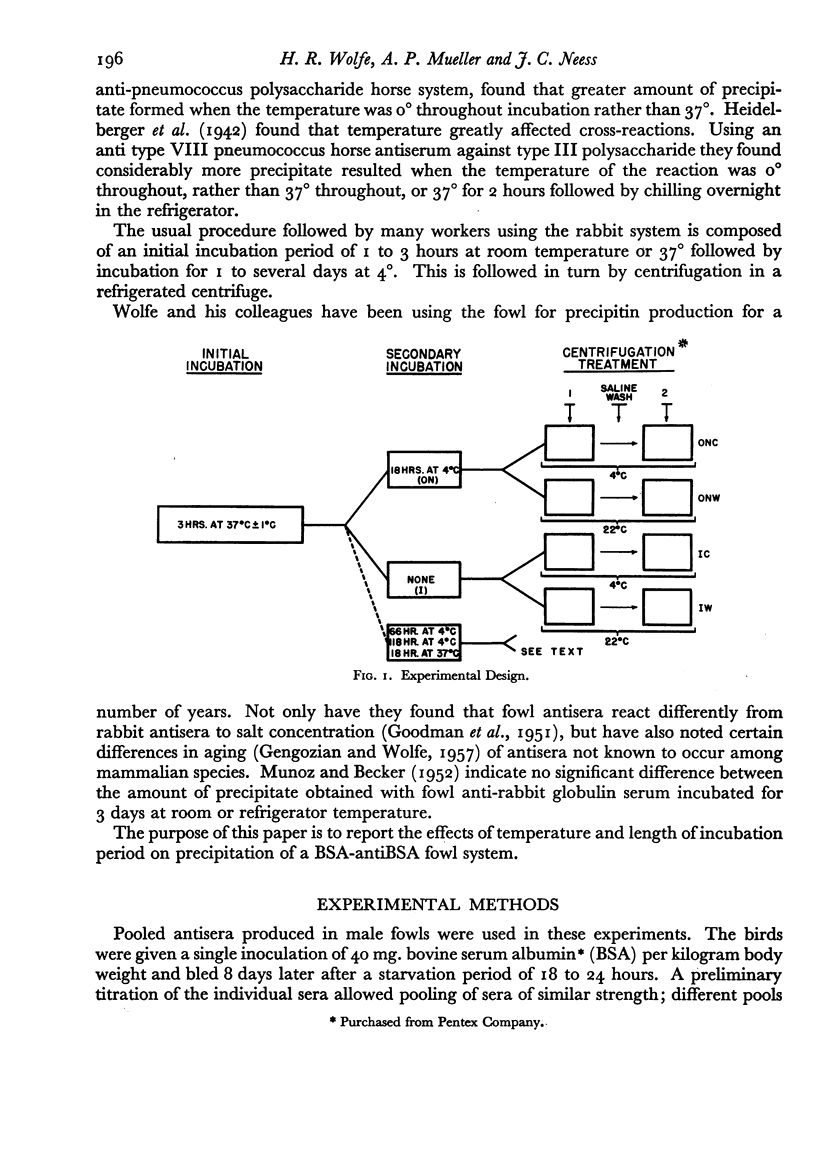
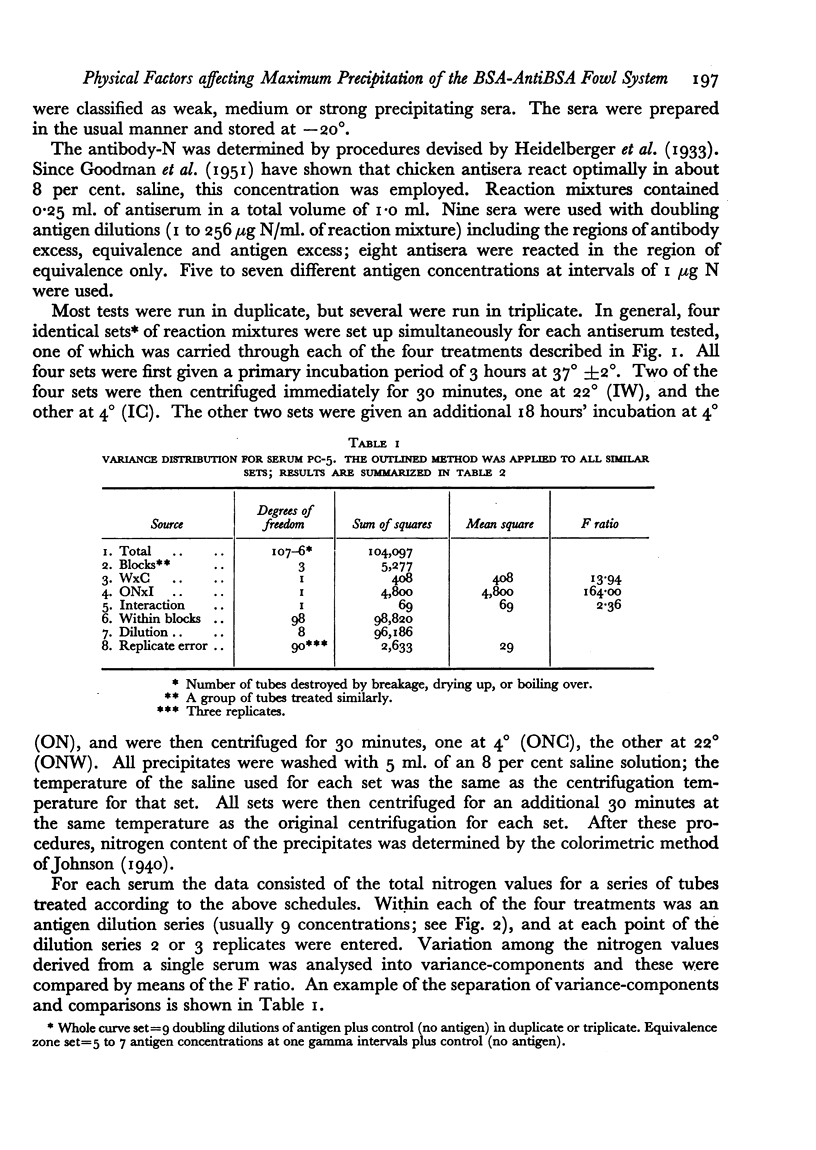
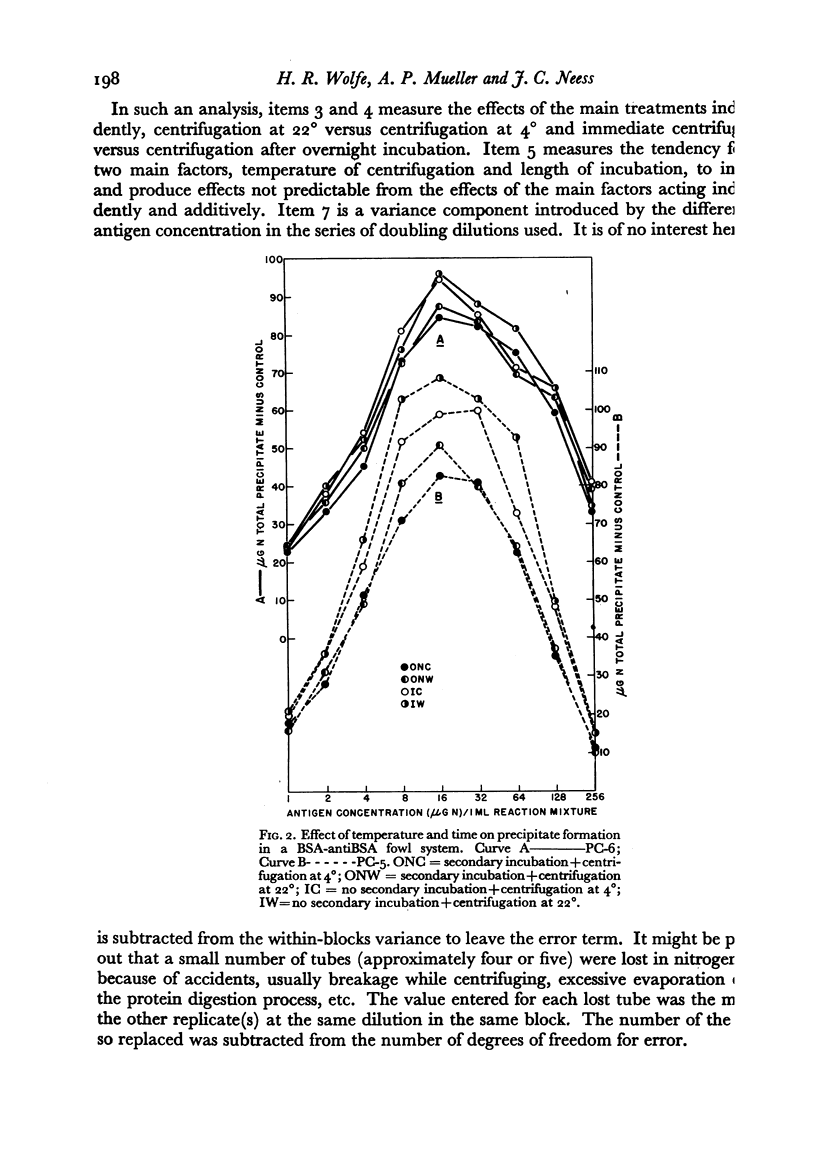
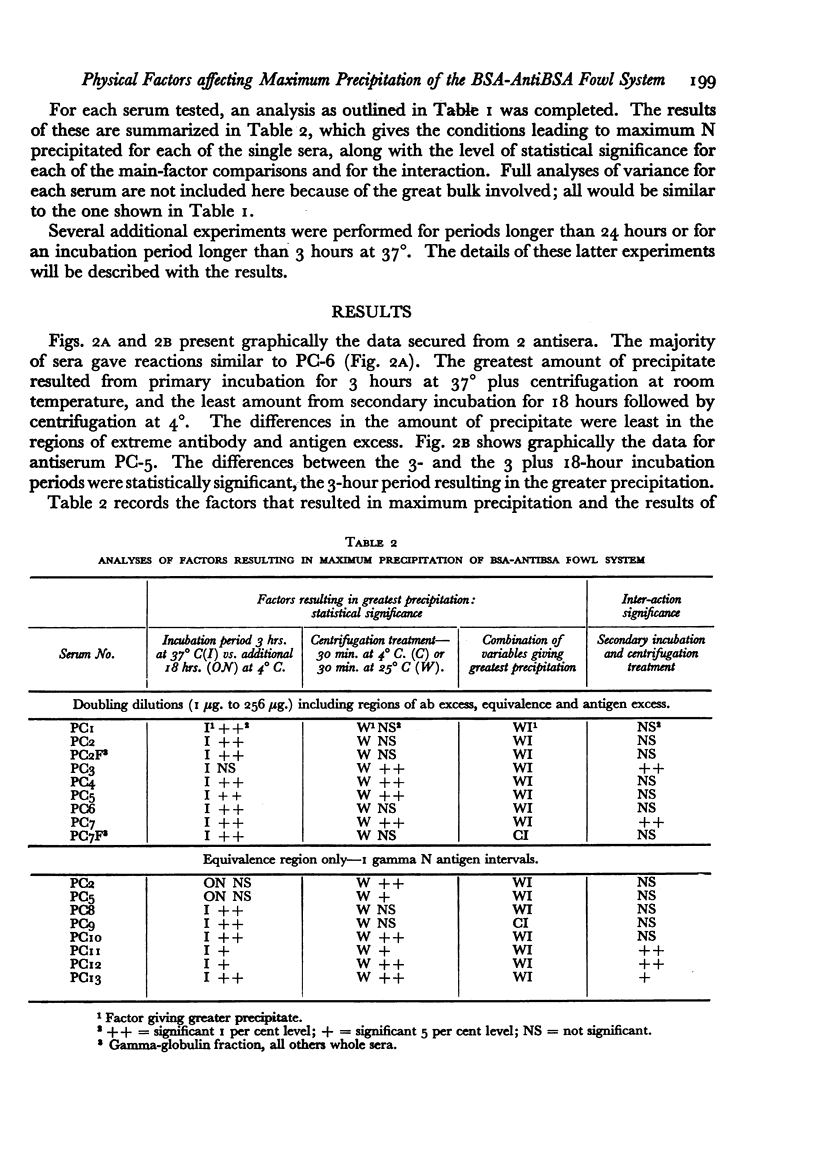
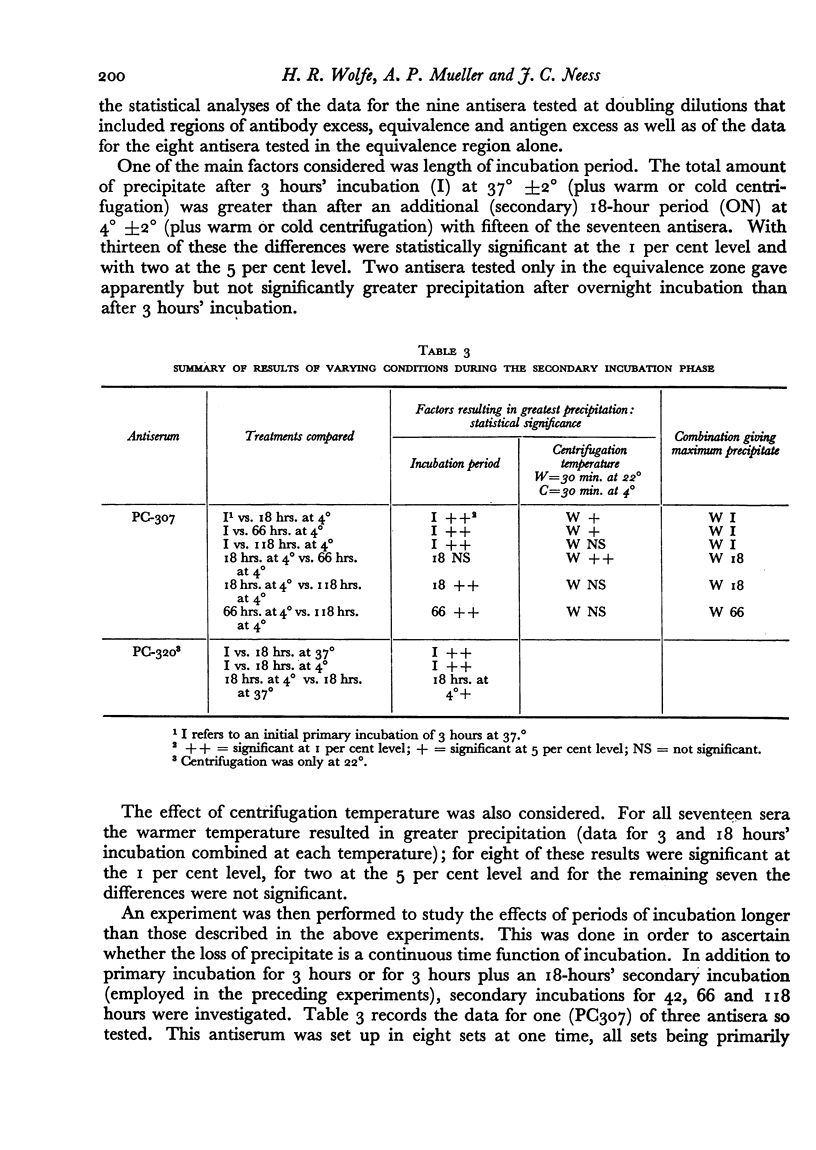
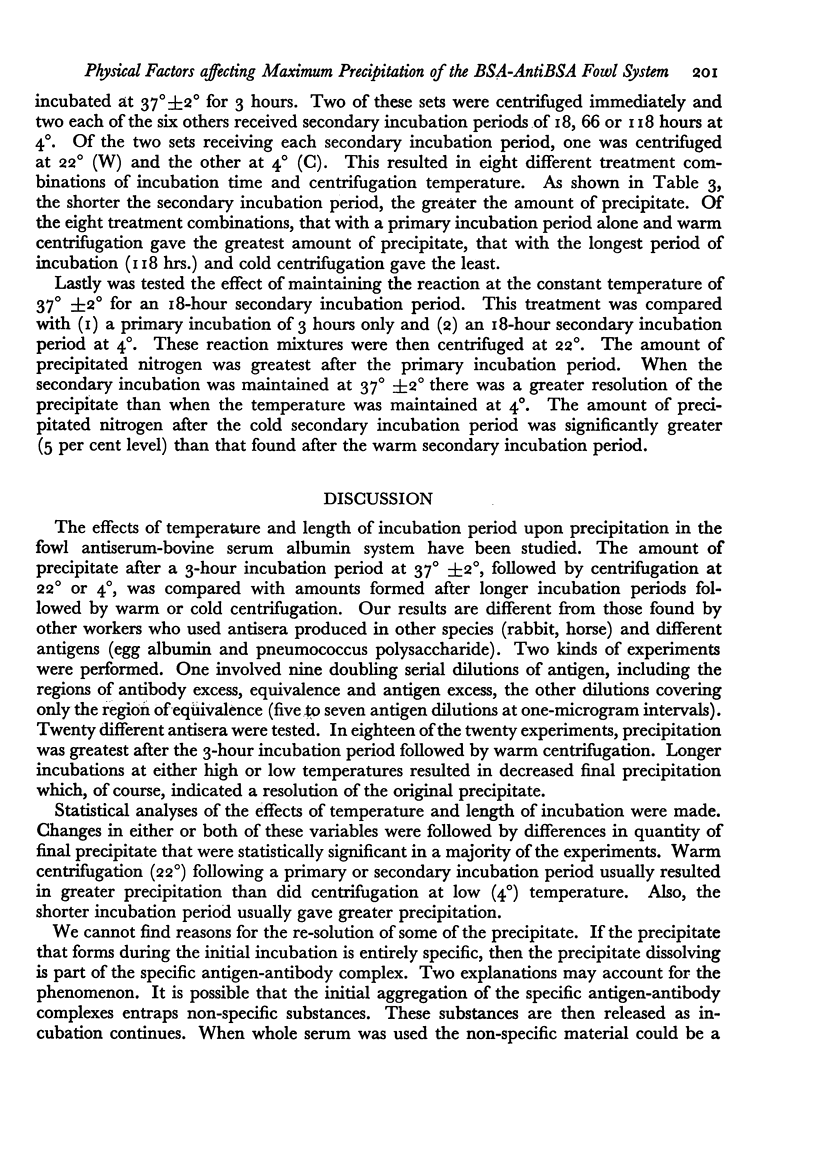
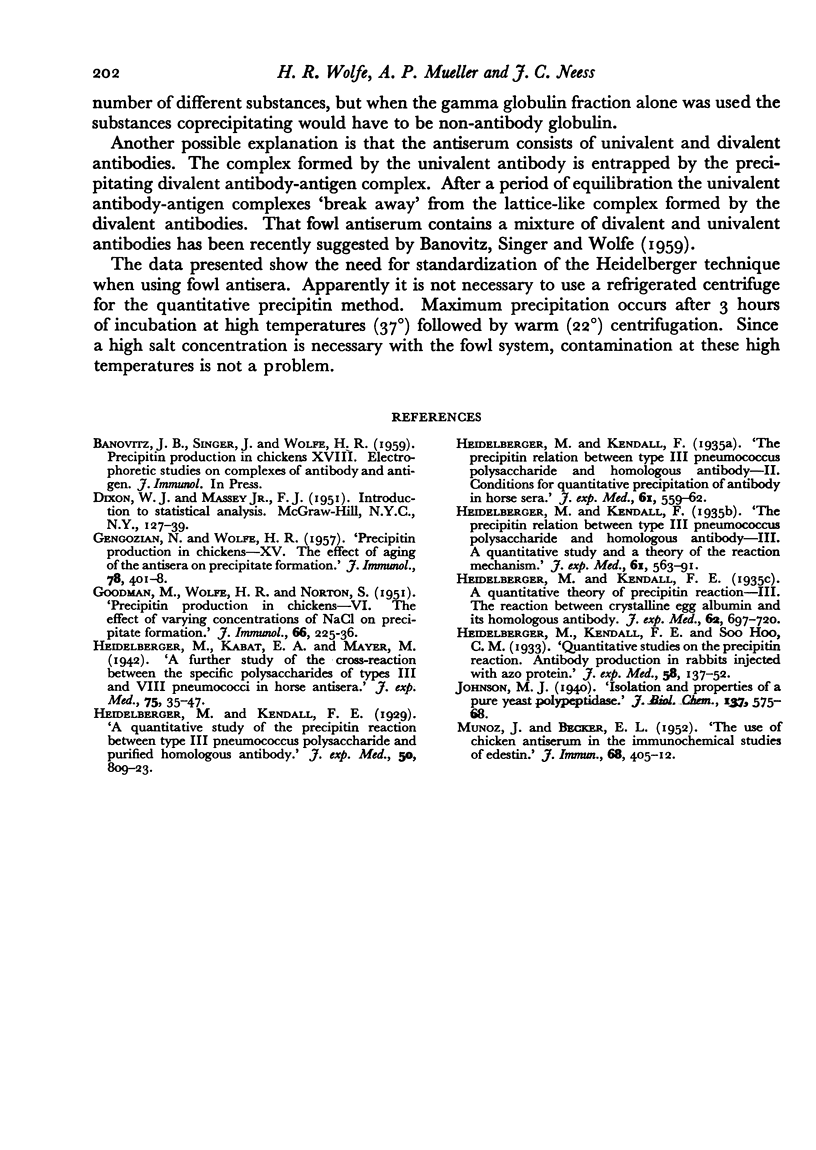
Selected References
These references are in PubMed. This may not be the complete list of references from this article.
- GOODMAN M., WOLFE H. R., NORTON S. Precipitin production in chickens. VI. The effect of varying concentrations of NaCl on precipitate formation. J Immunol. 1951 Feb;66(2):225–236. [PubMed] [Google Scholar]


